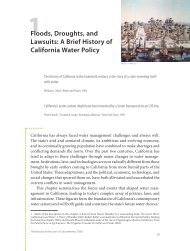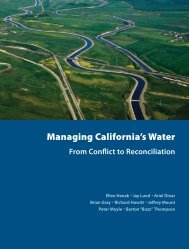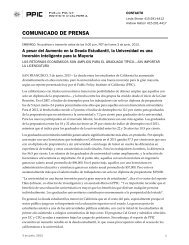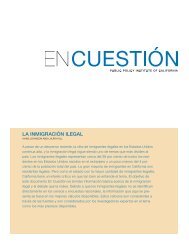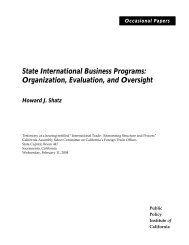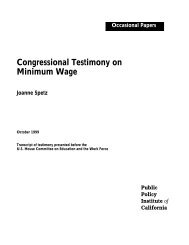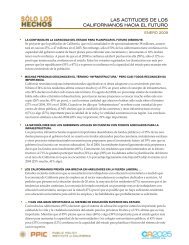Transportation Spending by Low-Income California Households ...
Transportation Spending by Low-Income California Households ...
Transportation Spending by Low-Income California Households ...
Create successful ePaper yourself
Turn your PDF publications into a flip-book with our unique Google optimized e-Paper software.
Appendix D<br />
Methods Used for the Example<br />
Commute Analysis<br />
We used the following steps to identify and cost out the illustrative<br />
commutes for Chapter 4.<br />
1. Identify the origins of the commutes.<br />
a. Use CTPP data to identify two neighborhoods (TAZs) in each<br />
county with the highest number of low-income residents.<br />
b. Use ArcGIS software to identify the geographic centroid of each<br />
low-income TAZ polygon as the exact point to use for the origin<br />
of the commute.<br />
2. Identify the destinations of the commutes:<br />
a. Use PUMS data to identify the most common place of work<br />
(county) for low-income workers who work outside their county<br />
of residence.<br />
b. Use ABAG 2000 job projections for Bay Area cities to identify<br />
the city with the most jobs in each county as the destination for<br />
our commutes. For each of the nine counties in the Bay Area,<br />
these cities are:<br />
County City Number of Jobs<br />
Alameda Oakland 193,950<br />
Contra Costa Concord 59,720<br />
Marin San Rafael 42,110<br />
Napa City of Napa 30,810<br />
San Francisco San Francisco 634,430<br />
San Mateo Redwood City 60,940<br />
Santa Clara San Jose 423,040<br />
Solano Fairfield 41,030<br />
Sonoma Santa Rosa 56,036<br />
c. Use GIS to determine the geographic center of the destination city.<br />
155



